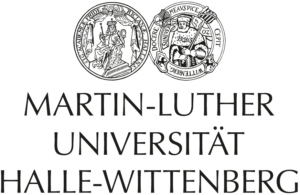Fibrillation kinetics of Parathyroid Hormone (PTH34) in presence of macromolecules
by Twinkle Bhatia
POSTPONED: Long chain Polyamides: Influence of methylene sequence length and external forces on structural features
by Rene Sattler
chair: Sebastian Kawa
date: January 31, 14.30
hybrid seminar: SR 1.30, von-Seckendorff-Platz 1, 06120 Halle and via zoom
Fibrillation kinetics of Parathyroid Hormone (PTH34) in presence of macromolecules
by Twinkle Bhatia
Medicinally, the parathyroid hormone (PTH) is administered to prevent tetany and regulate serum calcium levels. We study the impact of crowding on fibrillation pathways of PTH34. We use model crowders as PEG and Ficoll to mimic a macromolecular enriched surrounding. The fibrillar growth was monitored using Tht-fluorescence assay in order to extract two rates describing primary and secondary processes of seeding and growth. We used techniques as fluorescence correlation spectroscopy to discuss oligomeric states. Fibril morphologies were investigated using negative-staining electron microscopy.
Long chain Polyamides: Influence of methylene sequence length and external forces on structural features
by Rene Sattler
Crystallographic studies towards the influence of methylene sequence length on a series of even-even polyamides PA 10.n (with n = 12, 14, 16 and 18) are performed. Such long-chain Polyamides (LCPAs) are an interesting class of materials since they can be produced by renewable resources and show a similar property profile like classical PAs (e.g., P4.6, PA6 or PA6.6) but with easier processability, lower water absorption and lower density. Temperature dependent X-ray diffraction measurements show that the triclinic α phase is the preferred phase at room temperature after slow cooling from melt. In PA10.12 and PA10.14 a reversible Brill transition to the (pseudo)hexagonal high temperature γ phase is observed. However, the Brill transition temperature TB is strongly dependent on the methylene sequence length and shifting to higher temperatures with increasing methylene sequence length. For the two higher members a Brill transition is absent. The analysis of annealed, uniaxial oriented fibers reveals that the crystalline state achieved under ambient conditions is influenced by external forces. This is due to relatively small energetic differences between the α and β polymorphs. All the uniaxial oriented PA 10.n samples show a β polymorph which is most prominent for PA10.12 and PA10.14. The higher members show a mixture of the β polymorph superimposed with a certain fraction of the α polymorph.




